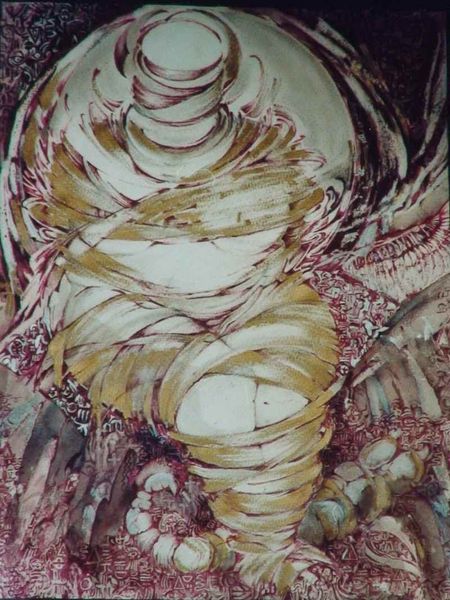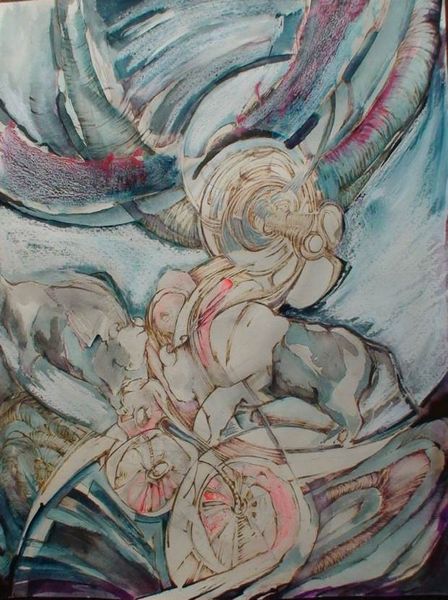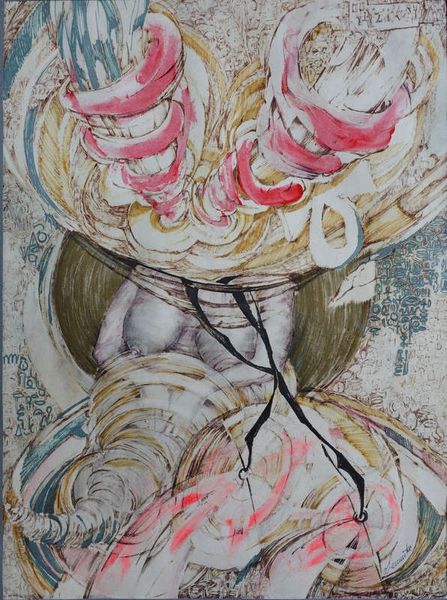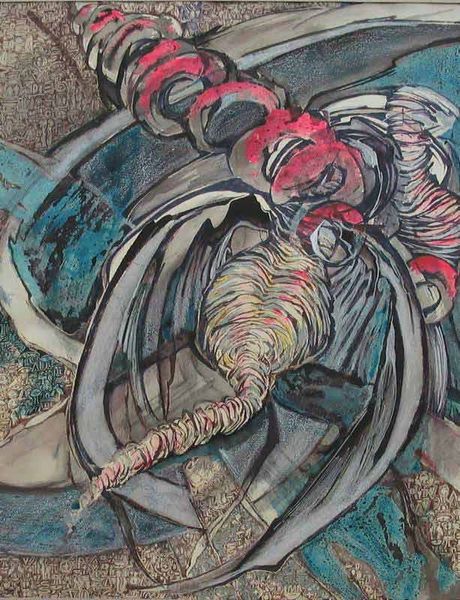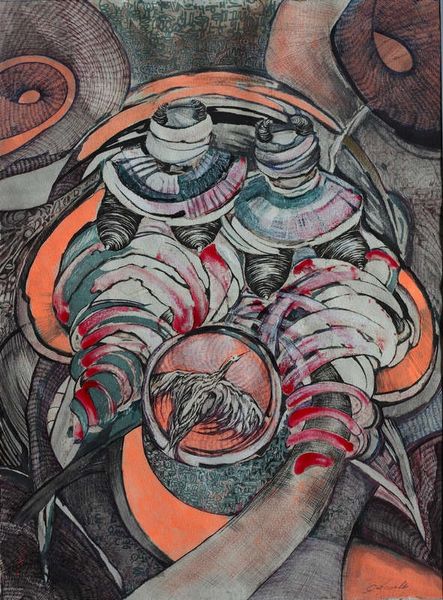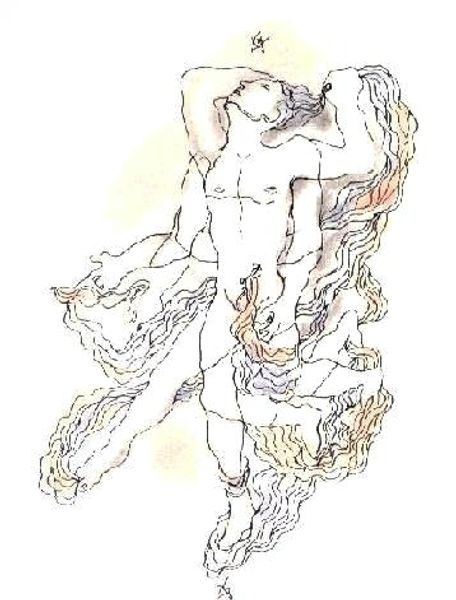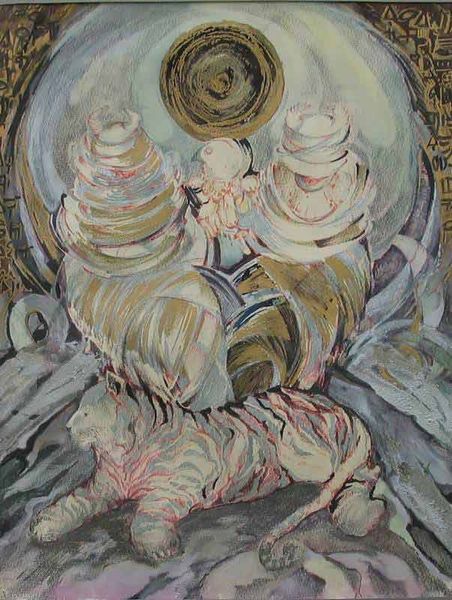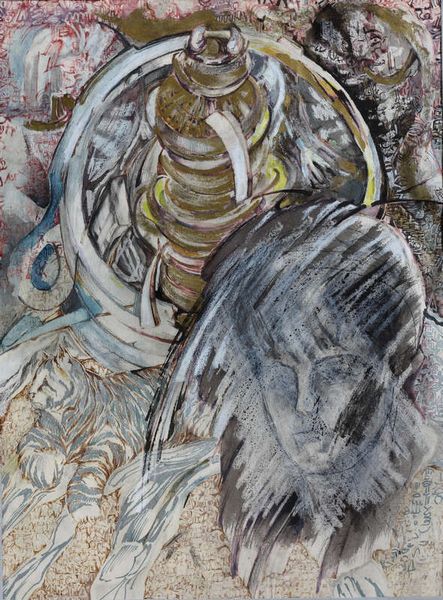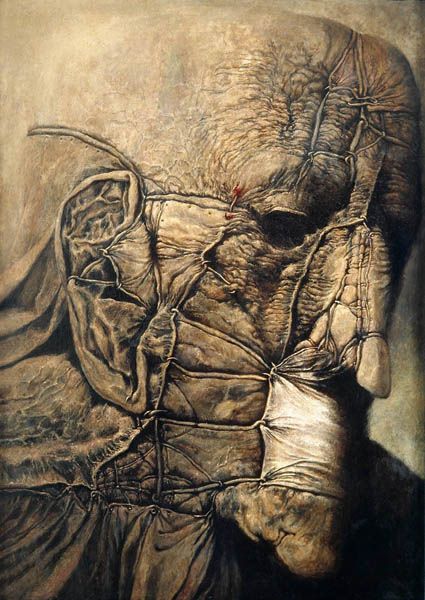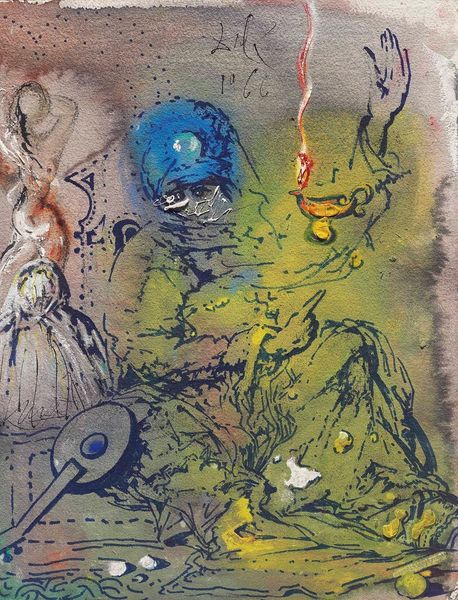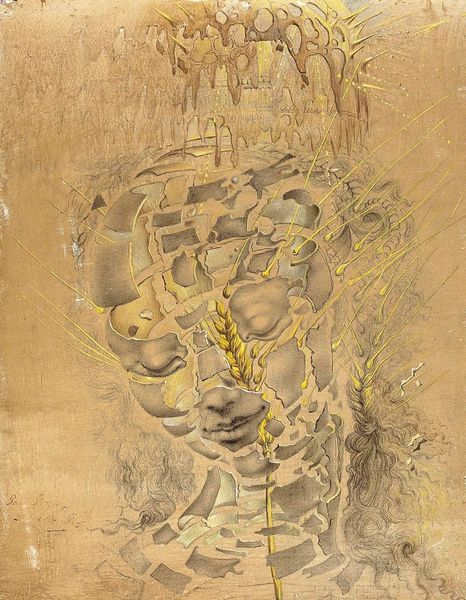
painting, acrylic-paint
#
portrait
#
abstract expressionism
#
painting
#
acrylic-paint
#
figuration
#
oil painting
#
acrylic on canvas
#
neo-expressionism
#
abstraction
Dimensions: 46 x 34 cm
Copyright: Małgorzata Serwatka,Fair Use
Editor: Here we have Małgorzata Serwatka's "Dauka 11," painted in 1987 using acrylic paint. It strikes me as a complex, almost overwhelming image, like a dream pulled from the depths of memory. What do you see in this piece? Curator: I see a powerful commentary on the societal expectations placed upon women, particularly in the late 20th century when this was created. The distorted figures, the use of heavy, almost suffocating shapes—it speaks to the pressures of conforming to beauty standards, of being weighed down by expectations. Editor: The figures do seem distorted and burdened. What about the patterned background? Does that relate to those pressures? Curator: Precisely. The background reads almost like a script, or maybe even branding, layered upon layered, suggesting a cultural text that dictates and confines. Consider the Polish context of 1987, still under communist rule but with Solidarity movements gaining momentum. What kind of imagery would an artist like Serwatka choose to represent the female body when cultural identity was becoming increasingly politically charged? Editor: So, you're suggesting it's a political piece as well, about freedom of expression and perhaps even women's liberation within that socio-political landscape? Curator: Exactly. It is difficult to separate social movements, like the feminist movement, from politics. "Dauka 11" doesn't exist in a vacuum, but actively communicates with art’s public, embedding Serwatka within conversations on Polish identity and expression. Does understanding that change your initial reading of the image? Editor: It definitely does. I initially saw a personal struggle, but now I recognize the broader social implications. Thanks for that. Curator: It highlights the significance of art as a tool for social dialogue, sparking discourse even today.
Comments
No comments
Be the first to comment and join the conversation on the ultimate creative platform.
